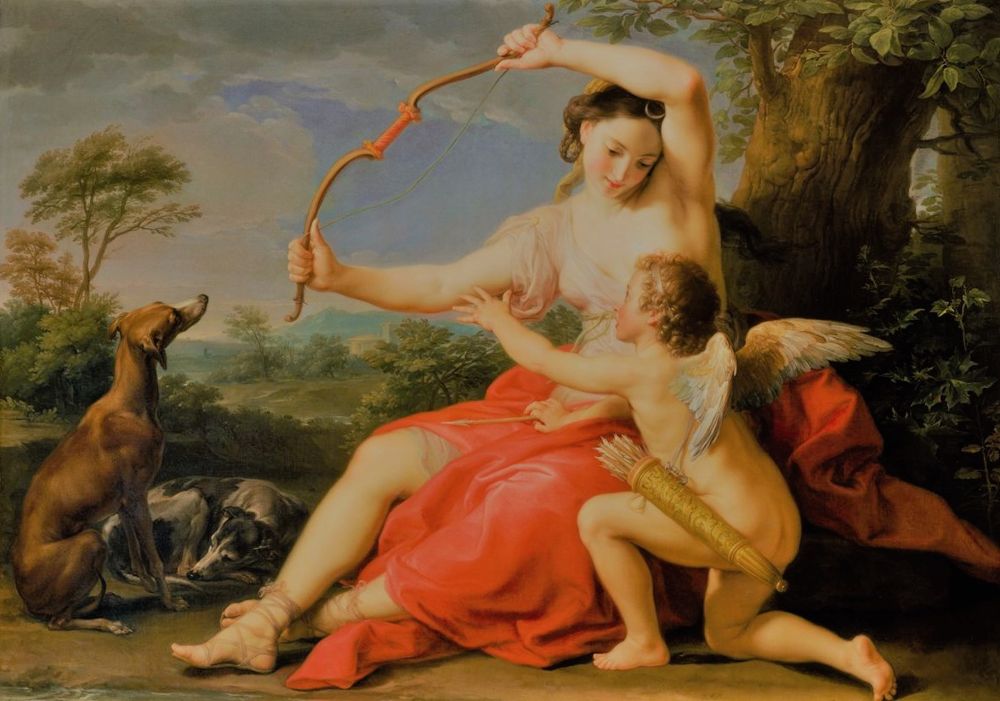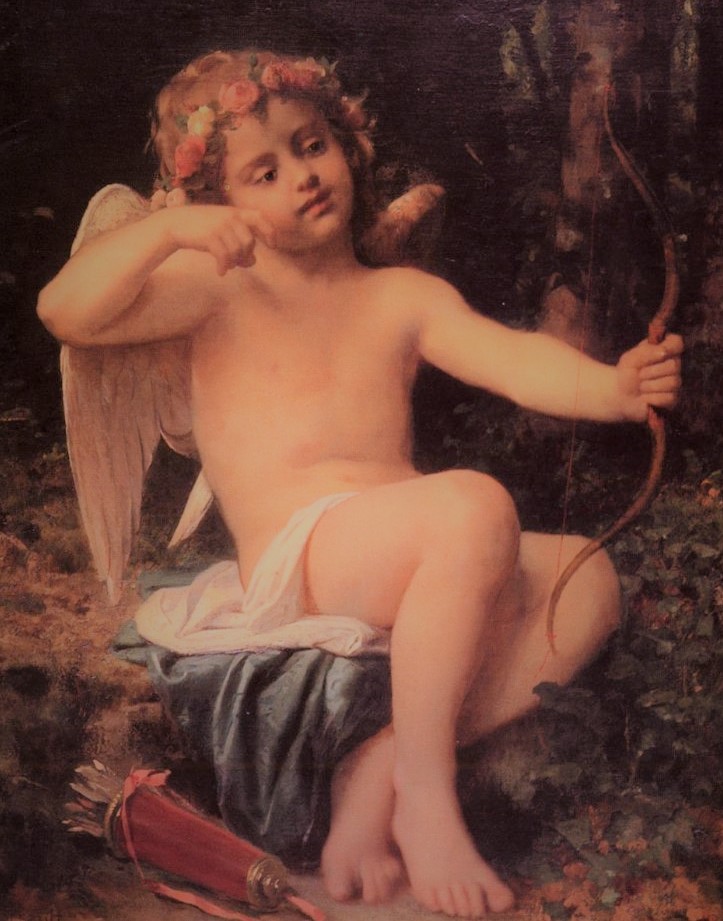Cupid's greek counterpart

When you hear the name Cupid, you probably think of a naked winged toddler flying around shooting the arrow of true love into unsuspecting couples around the world. And why not, this is the image we see on Valentine's Day cards and decorations. It turns out, the character of Cupid is a Roman adaptation of the Greek god of love, Eros, who was first discussed in Greek poetry of the Archaic period. The name Cupid comes from Cupido, the Latin word for desire.
Eros, Cupid's Greek counterpart, was supposedly the lovechild of either Venus and Mars, Nyx and Erebus, Iris and Zephyrus, or Aphrodite and Ares. Although Eros’ exact lineage is unclear, it is at least certain that he came from powerful parents. Another thing to note about Eros is that despite his depiction in popular media following the Roman’s rebranding, he was in fact a teenager, not a toddler. In the Archaic period, Eros was first described as irresistibly studly and handsome. Until the Hellenistic period, this portrayal became increasingly focused on his mischievous nature, ultimately leading to the Roman cherub-like depiction that we associated with Cupid today.

In the myth, Eros was a wiry winged teenage boy who was known for shooting golden arrows into gods and humans alike creating love and all sorts of other mischief. Something you might not expect is that Cupid's Greek counterpart Eros also traveled with leaded arrows in his quiver that could cause permanent aversion to love with a particular person. By looking to the Romans, we can see how Eros’ unique abilities created such intrigue surrounding the character.
It was said that the God Apollo fancied a beautiful young woman named Daphne. One day, he was boasting that he was a better archer than Cupid. In response, Cupid shot Apollo with a golden arrow of love, and then turned to Daphne, firing a leaded arrow into her heart. While Apollo was enamored, Daphne was equally averse. In fact, Daphne was so put off by Apollo's unwanted advances that she asked her dad, Peneus, a river god, to turn her into a bush. Which he did. Yes, the story of Apollo and Daphne is a fascinating tale of love lost and horticulture.
As is generally the case with myths and fables, there are a few key symbols and messages that we can take away from this. Both Eros and Cupid are both portrayed as young males, because both love and young boys are irrational. Both Cupid and Eros are archers, shooting their victims with arrows, because love often wounds the heart. Meanwhile, the pair’s wings are thought to represent the flighty and fickle nature of lovers. The ultimate moral, though, seems to be that you can’t force love. There is no quick, simple way to make someone fall in love with you, no matter how much you want it to happen.

As it turns out, the Roman characterization of Cupid outlasted his Greek counterpart Eros and has survived the test of time. Since the Roman rebranding of the god Eros, Cupid has been featured in countless works of art and literature. It seems that all of the greats including Shakespeare, Michelangelo, Botticelli, and the Latin poet Ovid have used the winged boy as a subject.
Today, Cupid is a common symbol for Valentine's Day. The chubby flying child is featured on everything from cards to heart-shaped boxes of candy during the season of love. It seems odd that a Greek boy-god has survived thousands of years to arrive in modern time as a symbol love right alongside chocolate and flowers. It also seems like we have all but forgotten about the whole leaded arrow part of the story. Maybe we have an aversion to aversion. Or maybe it because we love, love so much? One thing is for sure, it wouldn't be Valentine's Day without Cupid!
Happy Valentine's Day from Skipwish. If you're getting ahead of the gift buying for the holiday, check out our awesome suggestions on Valentine's Day gifts for him or get great suggestions from our gift ideas!
- No comments yet.
Trending Now
We've collected our users' most popularly posted gifts over the last year and filtered the results for the page you are on. Feel free to use the available filters to narrow down your search by age range, gender, location, and occasion. You can also use our price, popularity, rating, and vendor filters to narrow your results down further. These are our cupid's greek counterpart.
Visit Our our Gift Ideas page and our blog for more ideas!